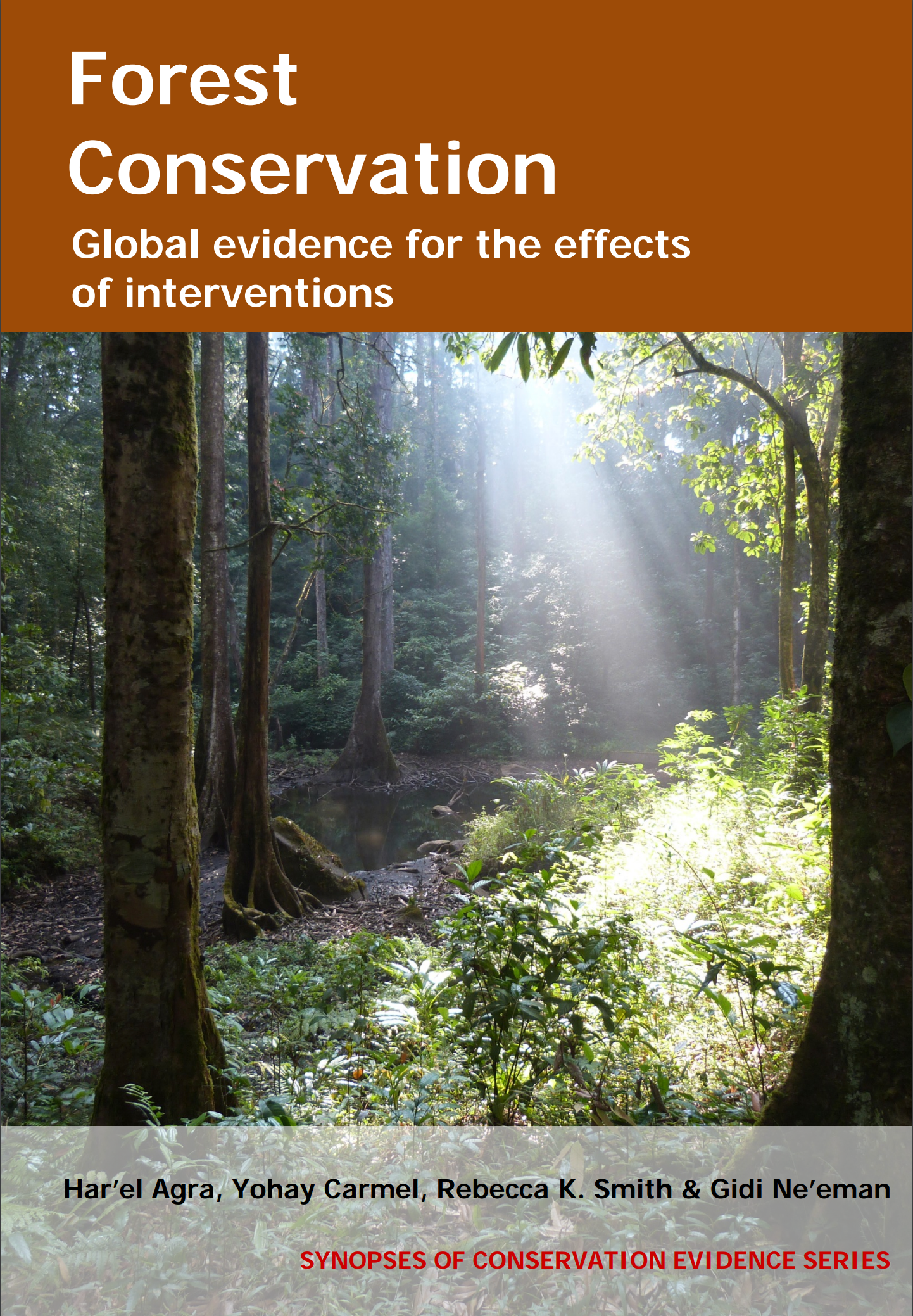Actions to conserve biodiversity
We have summarised evidence from the scientific literature about the effects of actions to conserve wildlife and ecosystems.
Review the evidence from the studies
Not sure what Actions are? Read a brief description.
Search for evidence
e.g. "frogs chytrid"
122 Actions found
Refine
Hide
122 Actions found
Download Actions
| 0 selected |
|
Order results by:
| Action | Effectiveness | Studies | Category | |
|---|---|---|---|---|
|
Use prescribed fire after tree planting Action Link |
Trade-off between benefit and harms | 4 |
|
|
|
Use prescribed fire to remove invasive plant species Action Link |
No evidence found (no assessment) | 0 |
|
|
|
Use prescribed fire: effect on understory plants Action Link |
Trade-off between benefit and harms | 37 |
|
|
|
Use prescribed fire: effects on mature trees Action Link |
Likely to be ineffective or harmful | 16 |
|
|
|
Use prescribed fire: effects on young trees Action Link |
Trade-off between benefit and harms | 17 |
|
|
|
Use rotational grazing to restore oak savannas Action Link |
No evidence found (no assessment) | 0 |
|
|
|
Use selective thinning after restoration planting Action Link |
Unknown effectiveness (limited evidence) | 1 |
|
|
|
Use shading for planted trees Action Link |
Unknown effectiveness (limited evidence) | 1 |
|
|
|
Use shelterwood harvest instead of clearcutting Action Link |
Likely to be beneficial | 3 |
|
|
|
Use shelterwood harvesting Action Link |
Trade-off between benefit and harms | 8 |
|
|
|
Use signs to prevent fire Action Link |
No evidence found (no assessment) | 0 |
|
|
|
Use soil disturbance to enhance germination (excluding scarification or ploughing) Action Link |
Unknown effectiveness (limited evidence) | 2 |
|
|
|
Use soil scarification or ploughing to enhance germination Action Link |
Unknown effectiveness (limited evidence) | 9 |
|
|
|
Use summer instead of winter harvesting Action Link |
Unknown effectiveness (limited evidence) | 1 |
|
|
|
Use thinning followed by prescribed fire Action Link |
Unlikely to be beneficial | 7 |
|
|
|
Use tree guards or shelters to protect planted trees Action Link |
Unknown effectiveness (limited evidence) | 2 |
|
|
|
Use vegetation removal together with mechanical disturbance to the soil Action Link |
Likely to be beneficial | 3 |
|
|
|
Use weed mats to protect planted trees Action Link |
Unknown effectiveness (limited evidence) | 1 |
|
|
|
Use wire fences within grazing areas to exclude livestock from specific forest sections Action Link |
Likely to be beneficial | 12 |
|
|
|
Use wire fencing to exclude large native herbivores Action Link |
Likely to be beneficial | 13 |
|
|
|
Water plants to preserve dry tropical forest species Action Link |
Unknown effectiveness (limited evidence) | 1 |
|
|
|
Water seedlings Action Link |
Unknown effectiveness (limited evidence) | 1 |
|
Download Actions
| 0 selected |
|

Forest Conservation - Published 2016
Forest synopsis
Watch this search
If you are familiar with RSS feeds, please click the button below to retrieve the feed URL:
RSS feed for this searchIf you are unfamiliar with RSS feeds, we would suggest reading this BBC article.
Unfortunately, due to the number of feeds we have available, we cannot provide e-mail updates. However, you could use tools such as Feed My Inbox to do this for you.
What are 'Individual studies' and 'Actions'?
Individual studies
An individual study is a summary of a specific scientific study, usually taken from a scientific journal, but also from other resources such as reports. It tells you the background context, the action(s) taken and their consequences.
If you want more detail please look at the original reference.
Actions
Each action page focuses on a particular action you could take to benefit wildlife or ecosystems.
It contains brief (150-200 word) descriptions of relevant studies (context, action(s) taken and their consequences) and one or more key messages.
Key messages show the extent and main conclusions of the available evidence. Using links within key messages, you can look at the paragraphs describing each study to get more detail. Each paragraph allows you to assess the quality of the evidence and how relevant it is to your situation.
Where we found no evidence, we have been unable to assess whether or not an intervention is effective or has any harmful impacts.





)_2023.JPG)














